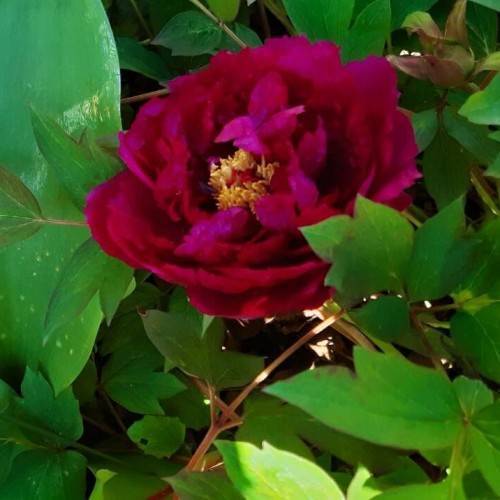
tree peony
Paeonia suffruticosa 'Guan Qun Fang' CHAMPION FRAGRANCE
Cycle:
Perennial
Watering:
Average
Hardiness Zone:
4 - 8
Flowers:
Flowers
Sun:
Full sun,part shade
Leaf:
Yes
Growth Rate:
Low
Maintenance:
Moderate
Care Level:
Medium
watering
Tree peonys should be watered generously once a week in the spring and summer months, and less often in the cooler months. Always check the moisture level of the soil prior to watering, as over-watering could lead to root rot. Be sure the water penetrates 8-12 inches into the soil when watering and avoid getting water on the foliage. If planted in containers, supplement when necessary with extra irrigation in the hotter months.
sunlight
Tree peonies need a minimum of 6 hours of direct sunlight each day. However, for optimal growth and flowering, they should receive 8-10 hours of full sun, with cooler morning light being especially important for blooms. For the tree peony species Paeonia suffruticosa 'Guan Qun Fang' CHAMPION FRAGRANCE, the best time to get direct sunlight is late morning or early afternoon. To ensure healthy growth, avoid exposing the shrub to intense afternoon sunshine and protect it from strong winds.
pruning
Tree peonies need to be pruned regularly but judiciously for them to stay healthy and bloom well. Pruning should take place in the late autumn or winter when the tree is dormant. Remove old, diseased, damaged or weak growth, as well as any dead or diseased flowers. Be sure to avoid cutting any healthy branches or stems. When finished, all prune cuts should be angled downward at a 45-degree angle. Pruning should focus on maintaining the desired shape of the tree. Trim plants into an open, vase-shaped form, leaving about 4 to 5 main stems that will produce new buds along the branches. This will give your tree peony an aesthetically pleasing shape and plenty of room to develop thick, nutritious stems. Once the shrub is established, no more than 1-third of the stems should be removed each year during the pruning period.
